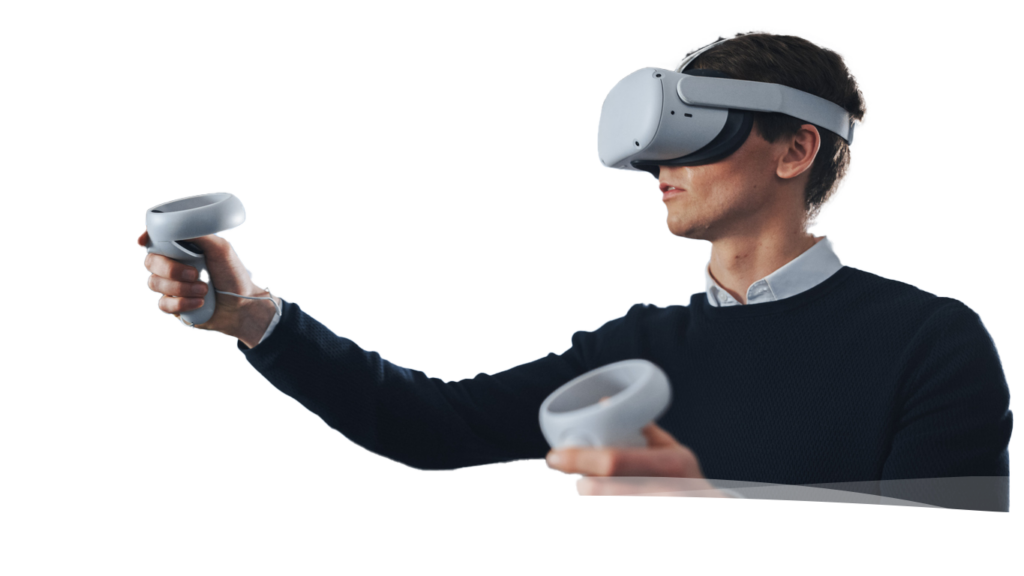
Workplace training has long been a crucial element of organizational success. From onboarding to upskilling, employees need to continuously learn and develop new skills to stay competitive in today’s fast-paced business environment. However, traditional training methods can often be mundane and unengaging, leading to a lack of motivation and retention.
Fortunately, with the advancement of technology, a new wave of immersive training experiences is emerging: extended reality (XR) training. XR is an umbrella term that includes virtual reality (VR) and augmented reality (AR), and it is transforming how employees learn and engage with training content. We cover this in more detail in our Extended Reality Explained: Types, Devices, and Best Applications article.
We asked a few professionals at MindSpring to highlight some ways we’ve seen XR redefine workplace training and enhance employee engagement:
1. Immersive Learning Environments
Both AR and VR training offers immersive and interactive learning environments that simulate real-world scenarios, providing employees with a hands-on learning experience. For example, a retail employee can practice interacting with customers in a virtual store, a surgeon can simulate complex medical procedures, or an engineer can troubleshoot machinery in a virtual factory. This type of training enhances engagement, retention, and knowledge transfer, as employees can practice and make mistakes in a safe environment.
2. Personalized Learning
XR training can also provide personalized learning experiences tailored to each employee’s needs and learning style. For instance, an employee can choose their preferred mode of learning, whether it’s through videos, simulations, or interactive games. The technology can also track an employee’s progress and provide personalized feedback and recommendations for further development.
3. Real-Time Feedback
XR training can offer real-time feedback to employees, enabling them to improve their performance as they go. For instance, during a VR simulation, an employee can receive instant feedback on their interactions with virtual customers or their execution of a particular task. This feedback can enhance the learning process and boost employee confidence and motivation.
4. Cost-Effective Training
XR training can be a cost-effective alternative to traditional training methods. It eliminates the need for physical training spaces, equipment, and trainers, reducing training costs significantly. Moreover, the technology can be reused for different training programs and updated easily to accommodate new learning objectives.
5. Remote Training
The COVID-19 pandemic accelerated the need for remote training, and VR technology is perfectly suited to this challenge. With VR training, employees can access training programs from anywhere, at any time, and in a safe environment. For example, employees in industries dealing with hazardous materials can receive VR training to simulate handling procedures, emergency responders can experience realistic emergency situations, and machine operators can learn proper techniques and safety procedures without being onsite. It eliminates the need for travel, accommodation, and other logistical challenges associated with traditional training
6. Just-in-Time Training
One of the significant advantages of AR training is its ability to provide just-in-time training, addressing immediate skill gaps or knowledge requirements as they arise. Traditional training often involves scheduling sessions in advance, which may not align with the urgent needs of employees in rapidly evolving industries. AR training allows employees to access specific training modules or resources instantly when they need them, regardless of their location.
As you can see, XR technology is transforming workplace training by creating immersive and interactive learning experiences that enhance employee engagement, retention, and knowledge transfer. It offers personalized learning, real-time feedback, cost-effective training, and remote accessibility. Companies that adopt XR training can reap the benefits of a more skilled and engaged workforce, leading to better business outcomes.
If you’re interested in exploring XR further and seeing how it can be applied to your business or organization, we encourage you to get in touch with us below. Our team of experts is always ready to help you leverage the latest technologies to create digital experiences that make a difference.


